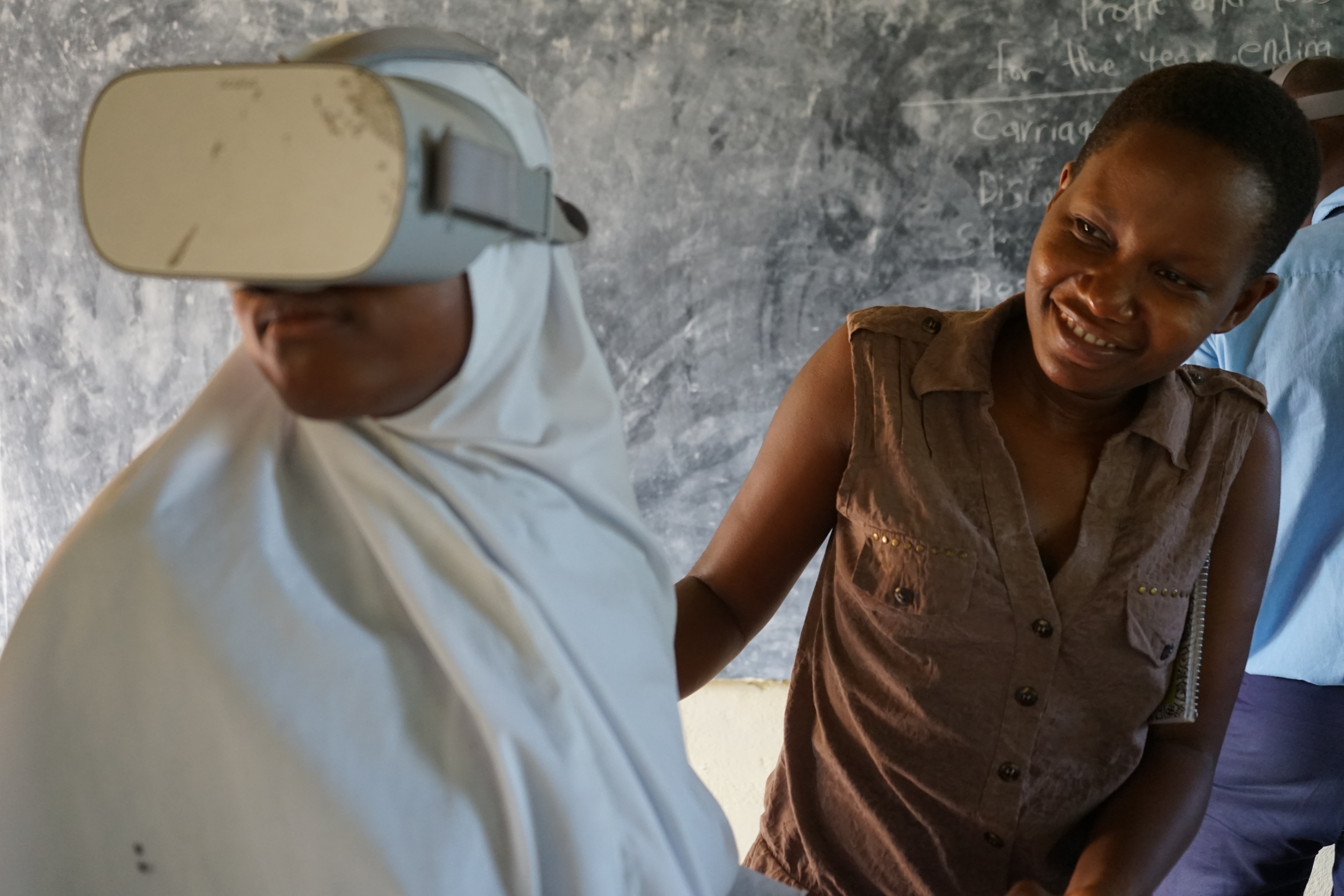
Credit: Grace Mwango
Over the last few decades, there has been an increase in research activities related to public engagement with Science, Technology, Engineering, and Mathematics (STEM). Although the nature and scope of these activities have varied widely, activities with young people, whether in their school environment, at research laboratories, or in science museums, have gained traction as a form of public engagement. The KEMRI-Wellcome Trust Research Programme (KWTRP) in Kilifi, Kenya, run a school engagement programme as part of its wider community engagement efforts. Local primary and secondary schools within the KWTRP’s Health and Demographic Surveillance area participate in the programme’s career talks and physical tours of research laboratories; I’m a Scientist, Get me out of Here! competition and support for Kenya Secondary Schools Science and Engineering Fair Competition.
We produced a virtual reality (VR) tour of the research laboratories to complement the KWTRP’s school engagement activities. Our VR project involved producing a 360-degree video aims at providing a risk free but immersive way for students to tour our research laboratories. We co-created the VR video with the students. A select number of students were invited for a guided physical tour of research laboratories. Afterwards, the students had a guided discussion of what they had learned from the tour and what concepts closely matched with what they covered in their school science curricula. That discussion guided the production of a script that was used to produce the VR video of our various research laboratory sections. The final product was a 9-minute VR video that covered the immunology, microbiology, and molecular biology sections of the laboratories. The video is filled with creative demonstrations of experiments, the important research work that is conducted at KWTRP, and, most importantly, it addresses the needs of the local community that the programme serves.
Virtual Tour of the KEMRI-Wellcome Trust Reseach Laboratories from Dr Patience Kiyuka on Vimeo.
The complete VR video was uploaded to the VR headsets and shown to students in various schools. Most students who watched it said they enjoyed the virtual tour and were able to learn about research.
- “The VR video allows you to tour the laboratory and see how people in the laboratory perform their work while we are in our school. Also, you can learn about the dangers of some laboratory chemicals. For example, we have learned that liquid nitrogen is very dangerous. We have been shown how it can dry up a leaf, so we know how dangerous it is.”
- “With virtual reality, you feel like you are walking there (the laboratories) yourself now, which is good.”
- “The virtual reality video is very interesting and makes one understand more about the research centre, and it also makes one feel like he or she is in the Kilifi KEMRI (KWTRP) laboratory.”
- “In virtual reality, when using it, we feel as if we are being involved, and thus, we get the first right-hand information. And the virtual reality video helps us to concentrate on the lab.”
- The students learned about the different laboratory equipment and reagents.
- “We saw the incubator, liquid nitrogen, the freezer, and the appearance and arrangement of the lab, which were the most interesting things in the video.”
- “The scientists used technological equipment in the research, e.g. they used an incubator to allow bacteria to grow in large numbers. We have seen the incubator; we have been shown today.”
After watching the video, the students were allowed to ask the scientist questions and discuss the issues arising from watching the video. Some of the questions students asked included what it takes to work at the KWTRP, indicating that the video may have raised interest and curiosity in science careers.

Please Sign in (or Register) to view further.